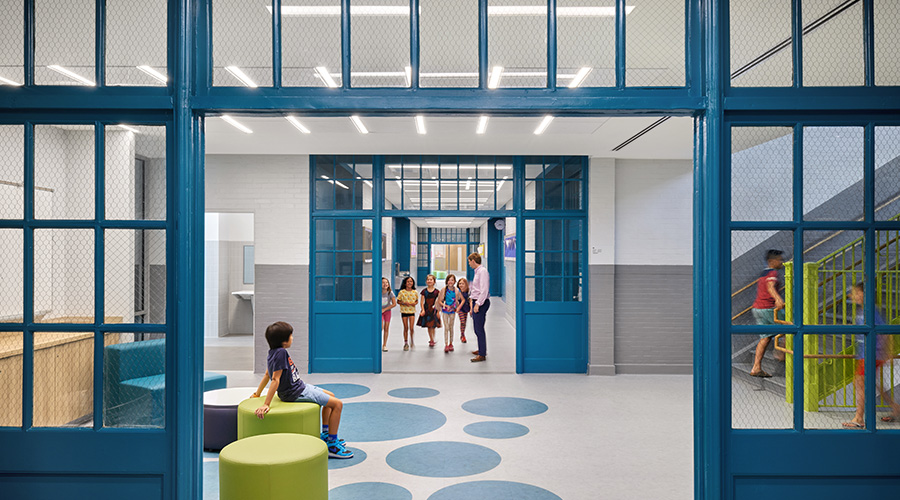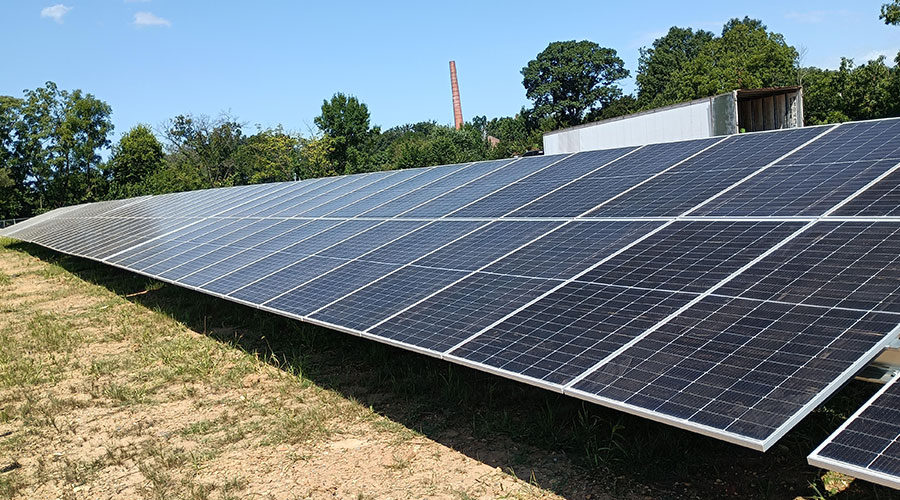Avoiding upgrade headaches
Projects that went wrong can offer valuable lessons to facility executives planning HVAC retrofits
While many HVAC upgrades go smoothly and achieve their desired results, nearly every facility executive has or has heard a horror story regarding how a well-meaning project went awry. These problems offer a trove of hard-won lessons in managing HVAC projects.
There is no single magic bullet that will prevent all problems. Rather, facility executives should sweat all the details. From start to finish, leave nothing unchecked, including reasons for upgrading, system design, specs, shop drawings, installations, testing/balancing, commissioning and how to verify energy cost savings, if appropriate.
Some of the worst problems are those that fall through the cracks between the responsibilities of the major players: designer, contractor, vendor and facility executive. In cases like that, more time can be spent placing blame than solving problems. Failure to understand existing systems or conditions, poor or conflicting documentation, and sloppy turnover of a completed job are among the reasons for disappointing results. These deficiencies are exhibited as problems with controls or building automation or energy management systems (EMS), complaints about comfort and air quality, or higher-than-expected operating costs.
The best time to avoid such problems is before their “installation.” Have the design checked by an engineering firm not associated with the contractor, and document all communications and changes. To find, fix and mitigate the financial impact of such problems, make rigorous commissioning part of the startup plan. If energy savings are expected, use a performance-based specification and contract based on accepted measurement and verification methods. And avoid overreaching: Sometimes a less sophisticated system, with fewer bells and whistles, will serve better than a complicated gold-plated wonder that leads to headaches.
Start With Why
When an HVAC system doesn’t provide desired results, one option is to replace it. Pressure to do so may come from several directions. While most HVAC and energy practitioners look for the best way to satisfy their customers’ needs, a few push customers toward full replacement simply because doing so will generate a greater profit for the contractor than repairing or re-commissioning.
Rather than jumping to replacement, the first step should be to develop a clear understanding of the causes of the problem and to make an effort to get the existing system working properly. One building professional summarized that lesson in three words: “re-commission before replacing.” Only when it is clear that existing equipment cannot satisfy present or near future needs should it be replaced or significantly altered.
In many cases, however, upgrades are pursued because existing systems are approaching or exceeding their normal lives or are inefficient by design because they were installed when energy prices were much lower, or because space conditions are changing. To get off on the right foot, start with a clear statement of the desired goals. Among those goals should be an ability to operate the new system using existing personnel and building automation or energy management system. If additional training or investment is needed, they should be part of the specs, design and turnover process.
To shortcut a job and cut engineering/design costs, some facility executives try to adapt specs from a prior similar installation. Doing so, however, could lock in a variety of mistakes, starting with possible code violations if regulations have changed since the spec was last applied. Energy and fire safety codes, for example, have seen significant changes over the last decade. Incorrect specifications can later require re-bidding, substitutions, design changes and other costly steps.
Don’t depend on bidders or vendors to catch such errors. Update specs before bidding a job. Use an engineering firm or in-house expertise to be sure that an outdated, inefficient, or possibly illegal installation will not occur. A good spec will also result in more realistic bids and fewer headaches later on.
While it’s not possible to anticipate every problem, some may be minimized through proper planning. Where energy cost savings are part of the basis for an upgrade, for example, later verification of those savings has often been a bone of contention. Claims and counterclaims regarding how savings were measured and verified have resulted in contractual fights and litigation. Too often, a contractor’s or customer’s simplified methods of proving savings were accepted, only to later find that it failed to properly account for weather and other variations.
Where professionally recognized methods for determining savings (such as the International Performance Measurement and Verification Protocol) were applied, however, this problem appears to have been addressed.
Document, Document, Document
One complaint heard from many facility executives is a lack of or conflicting documentation. Too much was left to spoken understandings that were not later put in writing, leaving disputes in their wake. Change orders, design alterations, equipment substitutions and programming revisions should all have appropriate paper trails that may later be reviewed in case of problems.
One way this problem may occur is through changes to sequences of operation — the order and settings of dampers, valves, fan speeds, for example — that do not reflect the intent of the design engineer. This results in simultaneous heating and cooling, noise, or comfort problems. Some energy management systems have the ability to log who made what changes and when. That capability should be used both to document such changes and, if changes are done incorrectly, to identify the party making them.
When a space is undergoing a major rehab or change of use, coordination between the architect and HVAC designer is critical. An increase in office equipment or population, for example, must be reflected in the new design’s air flow, coil capabilities, and so on, to maintain comfort under all conditions. Such expected load changes should be part of the design basis documentation.
Typical War Stories
Failing to fully or correctly program the energy management system is one common problem with HVAC upgrades. One major controls manufacturer has estimated that 50 percent of building management systems are not working properly. Systems are disorganized, not fully utilized, or applied incorrectly by HVAC contractors. While direct digital control systems hold great promise, a lack of training or experience has hobbled efforts to use them to wring out energy savings.
Problems may be due to incorrect programming, sensors that are located in the wrong place or are never connected, or failure to take account of interactions among systems. One problem with variable air volume systems, for example, is insufficient flow at low speed at the far end of a long duct run, resulting in complaints about air quality or circulation. Some systems have been designed to reduce flow based on return air temperature near the air handler (which “sees” the mix of return air from all spaces), with no sensitivity to conditions at the farthest point. Correcting the problem means adding temperature or flow sensors to ensure acceptable comfort conditions in such locations. Doing that raises the minimum air flow rate — and so reduces the expected savings from VAV.
Incorrect settings at startup can also cause problems. A high-end apartment building with central air conditioning installed an all-electric humidity control system to improve comfort. Electric resistance heaters vaporized water during the dry winter, while an air dryer (essentially a small chiller) condensed moisture from humid air in the summer. The humidity range settings at the energy management system were inadvertently reversed at startup, causing the two systems to fight each other. While tenants were comfortable, humidity was being injected at times when it wasn’t needed, causing the air dryer to run. The net result was high peak electric demand during the winter, bumping up the electric bill. Analysis of bills and load profiles didn’t find the problem until just before the third winter, after thousands of dollars had been wasted.
In other buildings, complaints of under- and over-heating resulted from poorly planned installation of outside air temperature sensors. In one case, a sensor was installed on the sunny side of a building without a shade. On bright but cold winter days, the sensor was warmed by direct sunlight, fooling the EMS into thinking less space heat was needed. The system lowered the circulating hot water temperature, causing cold complaints in perimeter areas. In a different building, the same problem occurred when a kitchen exhaust vent was re-routed, blowing hot oven exhaust air across a similar outdoor air sensor. In both cases, circulating water temperature suddenly shot up, creating wide temperature swings when the sun’s orientation changed, or the kitchen shut down between meal services. Until the patterns of these variations were finally understood, there was talk of trashing the EMS.
Too Much Control
When new HVAC controls are added in buildings already having some form of temperature control, a situation of “overcontrol” may result. Instead of the two systems working in tandem, one may limit or amplify the action of the other, creating comfort problems and higher energy bills.
In a New England housing complex, a reset system for adjusting circulating hot water based on outdoor air temperature was added to cut energy costs. Night setback room thermostats, however, already adjusted the flow of hot water through radiators based on a time and indoor temperature schedule. The net result was that, during swing seasons when the outdoor temperature was mildly cold, the circulating water temperature was lowered but the room thermostats, set up to work with a constant water temperature, delayed morning warm-up until the last acceptable moment. The result was a very slow warm-up time when only moderately warm water was available to lift morning room temperatures. Early risers complained of rooms remaining “cold even when the heat came on.”
Constantly re-adjusting the start time for all the thermostats to accommodate varying water temperature finally caused building staff to disconnect the temperature reset system, losing the expected fuel savings. The EMS, however, continued to send signals to reset the temperature, creating confusion between EMS staff and the contractor that installed the system.
One experienced HVAC maintenance contractor had a simple rule for determining the longevity of a newly installed but sophisticated system: If staff needs to repeatedly refer to an installation manual to keep it working, it will be disconnected within a year.
Problems at the End
Even when such installation and startup problems are avoided or corrected, difficulties may appear near the end of the job or after turnover, especially when deadlines have been missed and pressure is on to complete the work. If control sequences are, for example, left in test mode, they may not yield expected savings, or could cause comfort problems later when weather conditions change. Equipment substitutions — acceptable as temporary fixes when delivery of the specified items is delayed — may be left in place, causing similar problems down the road.
Even where everything is operating acceptably, problems may be lurking in the mechanical room: vibration or noise may indicate trouble; maintenance may be complicated because equipment was squeezed into a space that can’t later be easily accessed; or a partially blocked duct containing rags or insulation may provide enough air in winter but not enough in summer.
Correcting such problems may involve callbacks, additional staff training, invoking contractual terms or threatening litigation. Avoiding the problems — through good specs and contracts, hands-on project management, careful documentation, and continuous communication among the parties — is almost always cheaper.
COMMISSIONING
Making Sure It Works
System commissioning and testing and balancing should be part of the job completion process. Little is gained by nickel-and-diming the job budget over such verifications. They should instead be built into the total installation cost (but performed by an independent agent) rather than being forced after the fact when occupants complain.
If extra training is needed, there are many resources, some low-cost or free, available from controls manufacturers such as online self-taught courses, the Department of Energy, the ENERGY STAR program and professional training institutes. Among the free sources is the “Continuous Commissioning Guidebook” developed by DOE for federal energy and building managers (download it at www1.eere.energy.gov/femp/operations_maintenance/om_ccguide.html). It offers procedures for finding and resolving operating problems, maintaining or improving comfort, all while minimizing energy use.
|
Lindsay Audin is president of Energy-Wiz, an energy consulting firm based in Croton, N.Y. He is a contributing editor for Building Operating Management.
Related Topics:











